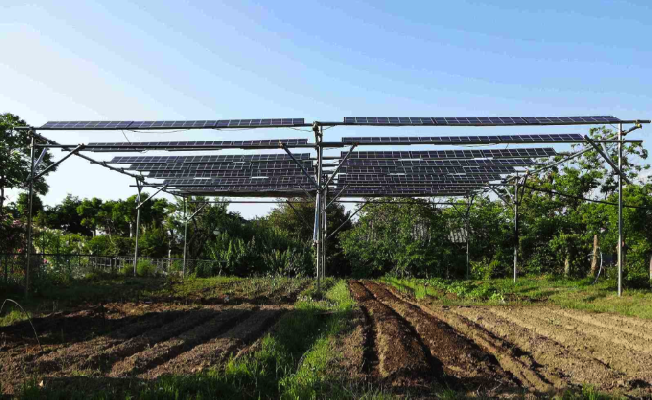For many people, solar power is seen as a threat to farming communities. That’s because they believe farmers must choose between raising crops or livestock and installing solar panels on their land.
The Fraunhofer Institute has been conducting experiments in what it calls agrophotovoltaics for two years near Lake Constance, Germany.
In the first year, it found the combination of solar and agriculture made the land 160% more productive than if it had been devoted exclusively to one or the other.

2018 was one of the hottest years yet in Europe, with the high temperatures having a negative affect on the yield from many farms.
Yet Fraunhofer’s Lake Constance experimental farm thrived. The shading provide by the solar panels actually increased the harvest and the extra sunshine boosted electricity output as well.
“Based on the 2018 potato yield, the land use efficiency rose to 186% per hectare with the agrophotovoltaic system,” says Stephan Schindele of Fraunhofer ISE in a press release.
The shade under the semi-transparent solar modules enabled the plants to better endure the hot and dry conditions of 2018.
The Lake Constance farm mounted its solar panels 5 meters above the ground, leaving room for livestock and plants to grow and conventional farm equipment to operate beneath the them.
Fraunhofer is experimenting with agrophotovoltaics in other parts of the world too, including Chile, Vietnam, and India.
A pilot study in the Indian state of Maharashtra showed that shading effects and less evaporation result in up to 40% higher yields for tomatoes and cotton crops.
Through the dual use of arable land, the main task of food production is met. The additional solar electricity production contributes to the expansion of electric mobility and serves to protect the climate.
Reference- Clean Technica, Fraunhofer Report






